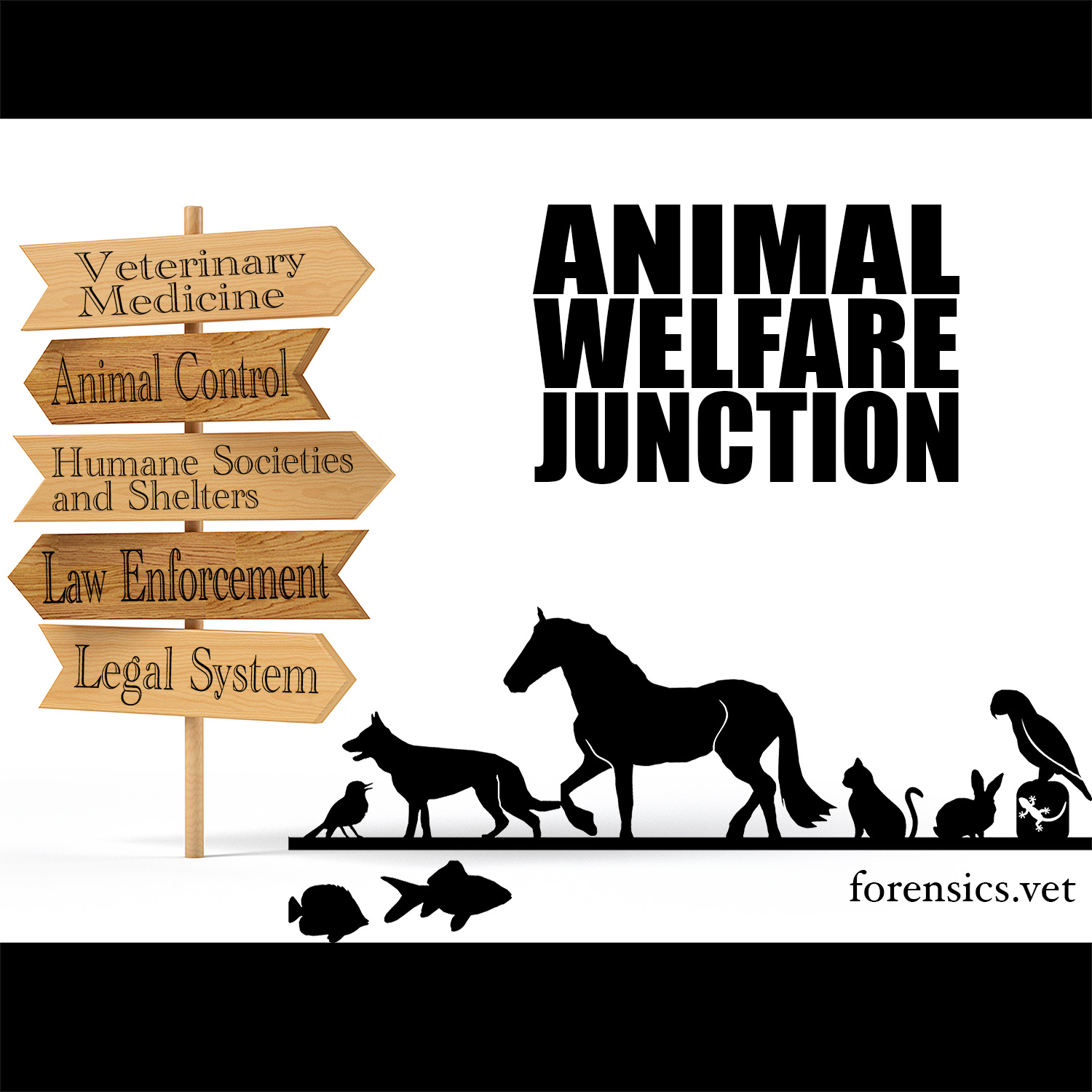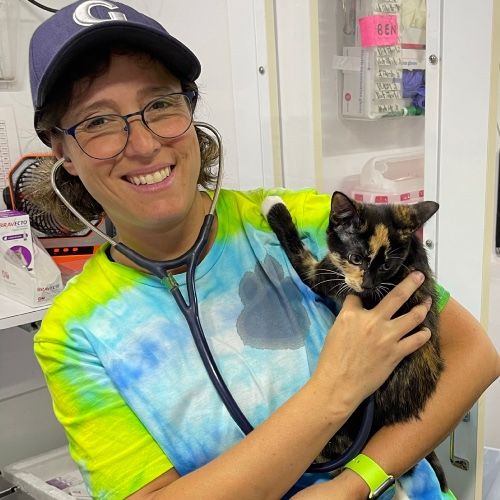UF Animal Forensics Conference 2024: Forensic Photography with Heidi Nichols
We are in person at the 2024 Animal Forensic Conference in Gainesville, Florida! Dr. G will be interviewing several of the speakers to give our audience a bit of the knowledge gained through the presentations. We will be releasing each interview individually to allow our listeners to find topics of interest.
In this episode, Forensic Photographer Heidi Nichols from the Miami Dade County Medical Examiner's Department shares information on the use of pictures to document a crime scene and the evidence recovered.
We would also like to invite our listeners involved in animal cruelty investigations to visit and join the International Society for Animal Forensic Sciences https://isafs.org/
Mentioned in this episode:
Keep it Humane Podcast Network
The Animal Welfare Junction is part of the Keep It Humane Podcast Network. Visit keepithumane.com/podcastnetwork to find us and our amazing animal welfare podcast partners.
Transcript
Our next guest is Heidi Nichols from the Miami Dade County
2
:Medical Examiner Department.
3
:Welcome to The Junction and
thank you for being here.
4
:Thank you.
5
:Excited.
6
:So can you first start by telling us
your background and how it relates
7
:to the field of veterinary forensics?
8
:Heidi Nichols: Yeah, so I am a forensic
photographer for the medical examiners
9
:and how it relates is, you know, forensic
photography is, No matter whether it's
10
:humans or a crime scene or any sort of
evidence, it relates also with animals.
11
:We're doing the same thing, whether we're
doing necropsies or crime scenes or search
12
:warrants of animal welfare, uh, cases.
13
:DrG: So what is the importance
of forensic photography, both as
14
:it relates to the crime scene and
then, like, evidence photography?
15
:Heidi Nichols: So it documents, it
visually documents what may change later.
16
:Um, what, uh, we might not be
able to see to the naked eye.
17
:We can use different alternate light
sources to be able to see things.
18
:Macro lenses to be able to enhance
things a little bit better.
19
:Um, so whether it be at a crime
scene or in an autopsy suite or a
20
:necropsy suite, we want to preserve
the evidence and make it an accurate
21
:representation of what we're seeing.
22
:Um, so we want to make sure that
we are using the correct, uh,
23
:equipment, the correct, um, lighting,
the correct exposure to be able
24
:to capture those images correctly.
25
:DrG: So I love pictures.
26
:I take pictures of everything,
like my poor kid, right?
27
:Like I'll take 10, 000 pictures
of everything, but I'm the same
28
:way when I go to a crime scene.
29
:So is there such a thing as
having too many pictures or is it
30
:worse to have too few pictures?
31
:Heidi Nichols: Oh gosh, I think
it's far worse to have too few.
32
:Um, I, I, we used to have an
expression, film is cheap.
33
:Um, and that was when film wasn't cheap.
34
:Um, because, you know, you, Now, I would
say you also don't want to just take
35
:random things of, you know, and this
is where knowing your equipment and
36
:making sure, like, that you are taking
a properly exposed image, so if it takes
37
:you 20 photos, to get that properly
good exposed photo, I'd say, you know,
38
:practice a little bit more, um, but
definitely, I don't think you can go
39
:wrong with having too many photos in the
sense of having too little photos, yeah.
40
:DrG: One of the things that I have that
has been a little bit of an issue has been
41
:some animal cruelty investigators have
been taking video in lieu of photographs.
42
:So what would be the problem with that?
43
:Heidi Nichols: The problem is that
there's not great quality if you try
44
:to pull those stills off of a video.
45
:So if you want to try to do any sort
of enhancements of, um, evidence
46
:that's there, whether it be, um,
classification of evidence or, um,
47
:analyzing any of those, you don't
have the same quality from the video
48
:than you do from the still image.
49
:DrG: One of the errors that I
personally committed when I started
50
:doing photography was that I use my
smartphone for everything, right?
51
:Because it was so convenient.
52
:I had it there.
53
:I could take pictures and everything,
but why is that not a good idea?
54
:Heidi Nichols: It's not that, I mean, and
especially the, the smartphones have come
55
:a long way, but if it's ever going to
go to court, they could confiscate your
56
:cell phone, they, you know, and that's.
57
:That's everything, your self,
your, your personal photos,
58
:your text messages, your emails.
59
:So um, if you're using your cell phone
or the, your jurisdiction is giving,
60
:you know, cause I know in some places
patrol, they have cell phones, they
61
:have little point and shoots, but
it's, it's dedicated just for that.
62
:That's the only thing it's being used for.
63
:It's not your personal
phone and your cell phone.
64
:Um, and again, like that's great for
just maybe, documentation of something.
65
:But again, if you're taking a photo
of, uh, to be analyzed, whether
66
:it be a paw impression, a foot
impressions, blood spatter, any of
67
:that, that's going to be analyzed.
68
:Um, you're just not going
to have the quality.
69
:Yeah.
70
:DrG: So what kind of cameras should
investigators be looking at considering
71
:that there are some places that do
not have a huge budget and then there
72
:are others that have unlimited budget.
73
:Heidi Nichols: Yeah.
74
:So, I mean, you, You're the di the
price of digital s SLRs and the
75
:mirrorless cameras have come way down.
76
:So I would say invest in a, in a good,
um, digital SLR or a mirrorless camera.
77
:Uh, you don't have to
spend a ton of money.
78
:I mean, a couple hundred dollars would
be able to get you, um, a, a good.
79
:interchangeable lens camera.
80
:There are really great point and
shoot cameras as well that have
81
:the manual override, which allows
you to change your exposure.
82
:So your F stops, your shutter speeds, your
ISOs, you can have control over those.
83
:So it's just a matter of looking
at them, comparing them and, and,
84
:and then practicing with them.
85
:Yeah.
86
:DrG: Now I know that I, I personally
was afraid of all of the different
87
:manipulations that you can do in a camera,
so it's like set it on automatic and go.
88
:But how, how difficult is it to learn
and what's the benefits of using
89
:the manual settings on the cameras?
90
:Heidi Nichols: Yeah, so it's really, I,
I always kind of say, well you're kind
91
:of setting it and forgetting it anyway.
92
:So if you're using a flash,
like do you use a flash?
93
:I do, I try, yeah.
94
:Okay, perfect.
95
:Perfect.
96
:So then, essentially, when you
photograph in manual mode, is
97
:you set your shutter speed to the
fastest to what your camera syncs at.
98
:So what do you use, Nikon or Canon?
99
:I believe it's a Canon.
100
:Okay, so Canon, I think it might be
the ISO, I mean the shutter speed,
101
:the fastest sync speed is 200.
102
:So you just set your shutter speed to 200.
103
:Um, if you're mostly, um,
in darker environments, you
104
:might set your ISO to 400.
105
:Those are two things that
you're leaving alone.
106
:And then you have your aperture
setting of your lens at F8, F11.
107
:Those are gonna give you great photos.
108
:And I mean, and it's a manual setting.
109
:You've control, you have control over it.
110
:Now you can always make
changes if it looks too dark.
111
:You can open up, slow down your shutter
speed, increase your ISO if you need to.
112
:So it, it really isn't as scary
once you sort of understand,
113
:uh, the components of it.
114
:DrG: Um, I took the Forensic Science
Master's degree from University of
115
:Florida, so a lot of it had to do with,
like, the crime scene investigation
116
:and the importance of photography and
that kind of stuff, and it teaches
117
:you about, um, kind of creating
a story with your photographs.
118
:But I have received pictures from
animal control officers that you
119
:have no idea what's going on.
120
:So what, what are the issues
with like these chaotic scenes?
121
:Heidi Nichols: Yeah, I just think
that photography isn't taught
122
:nearly as much as it needs to be.
123
:I think that now that the world is
digital, we all carry phones or we
124
:all carry cameras in our pockets.
125
:We all like kind of think of ourselves
as photographers and we just sort of have
126
:to strip back to some of those basics.
127
:and the basics of really understanding
exposure, and then again, just
128
:working in a systematic manner.
129
:You have to remember, uh, that.
130
:people are looking at your
photos that were not there.
131
:And we may get so ingrained and like,
we know this scene so well because
132
:we're working this scene, but you have
to step back and realize like, okay, if
133
:I give these photos to somebody, like,
are they going to know where we are?
134
:You know, I know when I'm looking at
the photo or I know that if I'm taking
135
:the photo where I am on the animal,
but again, if it's not a wide enough
136
:orientation or there's no overall
than somebody looking at the photo,
137
:they may have no idea where you are.
138
:DrG: So is there any benefit of
taking photography lessons or what
139
:resources are there available for
individuals that are taking crime scene
140
:photography or evidence photography?
141
:Heidi Nichols: Yeah.
142
:Oh my gosh.
143
:There are so many different types
of, um, crime scene photo or in basic
144
:photography classes that are out there.
145
:Um, I mean, you can just Google forensic
photography classes and a lot of
146
:different agencies, tri tech forensics.
147
:Um, uh, gosh, there's so many.
148
:So many different ones that offer a lot of
different photography courses and classes.
149
:And then practice.
150
:I would say just practice.
151
:Practice using your equipment, whether
you're photographing your pets,
152
:your children, vacations, whatever.
153
:The more you practice with
it, the better you'll be.
154
:And then, uh, also just practice.
155
:Just slow it down mentally when you're
at a crime scene and just say, okay,
156
:let me work on my overalls and then
my orientation and then my close up
157
:with and without a ruler and just sort
of become like second nature to you.
158
:Just overall orientation, close up.
159
:DrG: Well, thank you so much for
sharing your knowledge and thank
160
:you for everything that you do.
161
:Thank you.
162
:And thank you for being here.
163
:Heidi Nichols: Oh, thank you.

